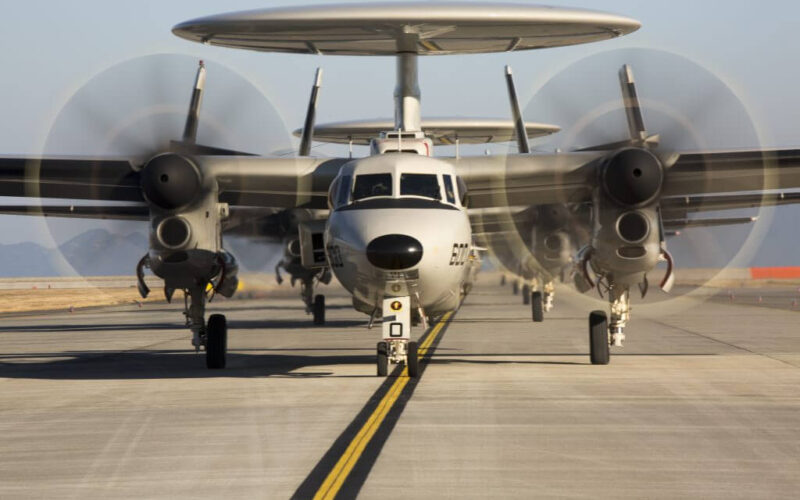The U.S.-based aerospace and defense company Northrop Grumman announced on May 31, 2019, that the first Grumman E-2D Advanced Hawkeye of an order of four had been delivered to the Japanese Air Self-Defense Force (JASDF).
The first aircraft was received on March 29, 2019, according to the manufacturer. The Japan Ministry of Defense chose the Northrop Grumman E-2D as its next airborne early warning requirement in November 2014.
The Advanced Hawkeyes will help the Japan Air Self-Defense Force in surveilling and securing the country’s airspace but also its territorial waters, as they are capable of detecting both aircraft and ships. The APY-9 Radar fitted in the E-2D has an effective range of over 500 km (270 nautical miles). Japan previously operated the Northrop Grumman E-2C Hawkeye since 1983 and is the largest E-2 operator outside the U.S.
On September 10, the US Defense and Security Cooperation Agency (DSCA) had approved a sale of nine additional Northrop Grumman E-2D Advanced Hawkeyes to Japan. Radio and navigation systems, spare parts and logistical support would also be included with the new air surveillance and airborne command aircraft for an estimated total contract of $3.135 billion. This sale has yet to be officialized.
This last decade has seen a surge of Chinese naval incursions in the Japanese territorial waters, especially in the Senkaku Islands, a Japanese territory claimed by both China and Taiwan. On September 6, 2018, the Japanese Ministry of Foreign affairs published a report claiming that up to five Chinese vessels enter the Japanese waters every month while sailing daily in its contiguous zone.
Territorial tensions have also recently increased between Seoul and Tokyo. On December 20, 2018, a Kawasaki P-1 maritime patrol plane of the Japanese Self Defense Force (JSDF) reported being locked by the fire control radar of the Korean destroyer “Gwanggaeto The Great”. In January 2019 alone, the South Korean authorities protested four times over Japanese patrol planes flying near one of their ships. Seoul military deemed it a “clear provocation.”

